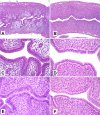TcsL is an essential virulence factor in Clostridium sordellii ATCC 9714
- PMID: 21199912
- PMCID: PMC3067498
- DOI: 10.1128/IAI.00968-10
TcsL is an essential virulence factor in Clostridium sordellii ATCC 9714
Abstract
Clostridium sordellii is an important pathogen of humans and animals, causing a range of diseases, including myonecrosis, sepsis, and shock. Although relatively rare in humans, the incidence of disease is increasing, and it is associated with high mortality rates, approaching 70%. Currently, very little is known about the pathogenesis of C. sordellii infections or disease. Previous work suggested that the lethal large clostridial glucosylating toxin TcsL is the major virulence factor, but a lack of genetic tools has hindered our ability to conclusively assign a role for TcsL or, indeed, any of the other putative virulence factors produced by this organism. In this study, we have developed methods for the introduction of plasmids into C. sordellii using RP4-mediated conjugation from Escherichia coli and have successfully used these techniques to insertionally inactivate the tcsL gene in the reference strain ATCC 9714, using targetron technology. Virulence testing revealed that the production of TcsL is essential for the development of lethal infections by C. sordellii ATCC 9714 and also contributes significantly to edema seen during uterine infection. This study represents the first definitive identification of a virulence factor in C. sordellii and opens the way for in-depth studies of this important human pathogen at the molecular level.
Figures





References
-
- Aldape, M. J., A. E. Bryant, and D. L. Stevens. 2006. Clostridium sordellii infection: epidemiology, clinical findings, and current perspectives on diagnosis and treatment. Clin. Infect. Dis. 43:1436-1446. - PubMed
-
- Amimoto, K., T. Noro, E. Oishi, and M. Shimizu. 2007. A novel toxin homologous to large clostridial cytotoxins found in culture supernatant of Clostridium perfringens type C. Microbiology 153:1198-1206. - PubMed
-
- Amimoto, K., et al. 2001. Protective effects of Clostridium sordellii LT and HT toxoids against challenge with spores in guinea pigs. J. Vet. Med. Sci. 63:879-883. - PubMed
-
- Aronoff, D. M., and J. D. Ballard. 2009. Clostridium sordellii toxic shock syndrome. Lancet Infect. Dis. 9:725-726. - PubMed
Publication types
MeSH terms
Substances
Grants and funding
LinkOut - more resources
Full Text Sources
Molecular Biology Databases

